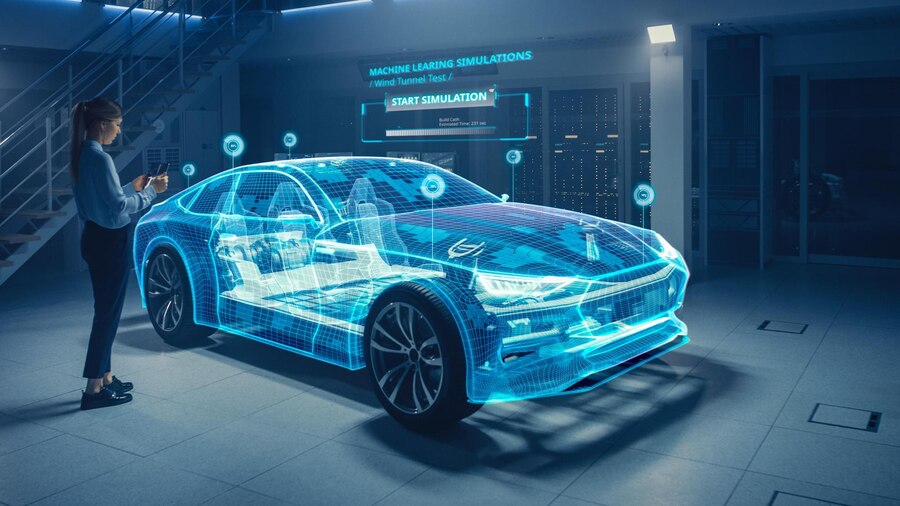Navigating Complexities in Automotive Systems Engineering: The Role of LLMs in MBSE
- August 28, 2024
- Generative AISystems Engineering

In the realm of modern automotive engineering, the integration of advanced Electrical/Electronic
(E/E) systems has transformed vehicles into sophisticated, interconnected machines. However,
this evolution brings forth its own set of challenges, particularly in the domain of Model-Based
Systems Engineering (MBSE). This blog delves into these challenges, focusing on E/E systems,
and explores how Language Models (LLMs) can revolutionize AI for MBSE, particularly in
generating system models such as UML SysML, etc.
Challenges in Automotive MBSE
1. Complexity of E/E Systems:
E/E systems in vehicles have become increasingly complex, encompassing functionalities
ranging from infotainment and advanced driver-assistance systems (ADAS) to autonomous
driving capabilities. Managing the interactions and dependencies within these systems demands
a structured approach that traditional methods often struggle to accommodate.
2. Integration and Interoperability:
Automotive MBSE involves integrating various disciplines such as mechanical, electrical,
software, and hardware into a coherent system. Ensuring interoperability and seamless
integration across these domains is challenging due to differences in design languages, tools,
and development lifecycles.
3. Scalability and Reusability:
As vehicle complexity grows, so does the need for scalable and reusable models. Traditional
MBSE practices sometimes fall short in adapting to changes and scaling across different vehicle
platforms or generations.
4. Verification and Validation:
Validating E/E systems’ functionality and safety is critical in automotive engineering. MBSE
should support rigorous verification processes to ensure that system models accurately reflect
real-world behaviour and comply with safety standards.
AI4MBSE and the Role of LLMs
1. Generation of System Models:
Large Language Models (LLMs) are poised to transform AI for MBSE by automating the
generation of system models such as UML (Unified Modeling Language), SysML (Systems
Modeling Language) etc. LLMs can interpret textual descriptions of system requirements and
automatically generate corresponding models, reducing manual effort and potential errors.
2. Natural Language Understanding (NLU):
LLMs excel in natural language understanding, making them adept at parsing and interpreting
complex customer requirements, engineering specifications, or even regulatory documents. This
capability streamlines the translation of textual requirements into precise system models,
fostering a more efficient MBSE workflow.
3. Integration with Existing Tools and Standards:
AI-powered MBSE tools can integrate seamlessly with existing design tools and standards used
in the automotive industry. By generating models that comply with UML or SysML standards,
LLMs facilitate interoperability and ensure consistency across different phases of the
development lifecycle.
4. Enhancing Collaboration and Knowledge Sharing:
AI-driven MBSE promotes collaboration by providing a common platform for engineers from
different disciplines to contribute and review system models. LLMs can assist in generating
documentation, explaining design decisions, and maintaining a clear audit trail of changes,
thereby enhancing knowledge sharing and improving overall project transparency.
The future of Automotive MBSE lies in harnessing AI capabilities, particularly through advanced
LLMs, to address the inherent challenges posed by complex E/E systems. As vehicles continue
to evolve with more integrated and intelligent functionalities, the role of AI4MBSE becomes
indispensable. By leveraging LLMs for automated generation of system models like UML and
SysML, automotive engineers can streamline development processes, improve accuracy, and
accelerate innovation in vehicle design.
Leverage Generative AI in MBSE with Teratics
At Teratics, we offer Generative AI based Assistants tailor-made for automotive MBSE to reduce
cost, reduce development time, increase productivity & quality and ensure compliance with
industry standards.
